
To Sell Is Human: The Surprising Truth About Moving Others
by
Daniel H. Pink
Published 1 Dec 2012
Whether you’re selling computers to a giant company or a new bedtime to your youngest child, ask yourself: “What’s the one percent?” If you can answer that question, and convey it to others, they’re likely to be moved. Part Three What to Do 7. Pitch In the fall of 1853, an American craftsman named Elisha Otis, who had found a solution to one of the era’s toughest engineering problems, went looking for a grand stage to demonstrate his invention. At the time, many American buildings had elevators. But the mechanics of how these crude contraptions worked—a combination of ropes, pulleys, and hope—hadn’t changed much since the days of Archimedes.
…
The purpose is to offer something so compelling that it begins a conversation, brings the other person in as a participant, and eventually arrives at an outcome that appeals to both of you. In a world where buyers have ample information and an array of choices, the pitch is often the first word, but it’s rarely the last. The Six Successors to the Elevator Pitch Elisha Otis’s breakthrough had a catalytic effect on many industries, including the business of giving advice. Almost from the moment that elevators became commonplace, gurus like Dale Carnegie advised us to be ever ready with our “elevator speech.” The idea was that if you found yourself stepping into an elevator and encountering the big boss, you needed to be able to explain who you were and what you did between the time the doors closed shut and dinged back open at your floor.
…
The McKinsey Global Institute estimates that the typical American hears or reads more than one hundred thousand words every day.6 If we leave our desk for a few minutes to grab a cup of coffee, greeting us upon our return will be new e-mails, texts, and tweets—not to mention all the blog posts we haven’t read, videos we haven’t watched, and, if we’re over forty, phone calls we haven’t returned. Today, we have more opportunities to get out our message than Elisha Otis ever imagined. But our recipients have far more distractions than those conventioneers in 1853 who assembled to watch Otis not fall to his death. As a result, we need to broaden our repertoire of pitches for an age of limited attention and caveat venditor. Over the last few years, I’ve been collecting pitches anywhere I could find them.

Built: The Hidden Stories Behind Our Structures
by
Roma Agrawal
Published 8 Feb 2018
The equivalent of the entire world’s population is moved in an elevator every 72 hours. * I was reminded of Elisha Otis during my visit to the Burj Khalifa in Dubai, the world’s tallest building (at 829.8m), because his company installed the elevators that were about to take me to the observation deck on the 124th of its 163 floors. It was a more serene journey than my trip up the outside of the tallest tower in Western Europe in a cage-like hoist, although the floor number on the LCD display changed with a bewildering rapidity as we ascended at 36km/h. (Elisha Otis’s original elevator in the E.V. Haughwout Building climbed at just over 0.7km/h.)
…
Today, we’re so used to pressing a button and summoning a mobile cubicle to whisk us up and down our multi-storey towers that we don’t give it a second thought. But before the 1850s, elevators in this form didn’t exist. And although we started to build skyscrapers fairly soon after the invention of the elevator, such a device wasn’t originally designed with buildings in mind, but as a safer way to move materials around a factory. Like Archimedes, Elisha Otis had a restless and creative imagination. While working in a variety of jobs – carpenter, mechanic, bedstead manufacturer, factory owner – he invented an automatic turner that made the production of bedsteads four times faster; a new type of railway safety brake; and even an automatic bread-baking oven.
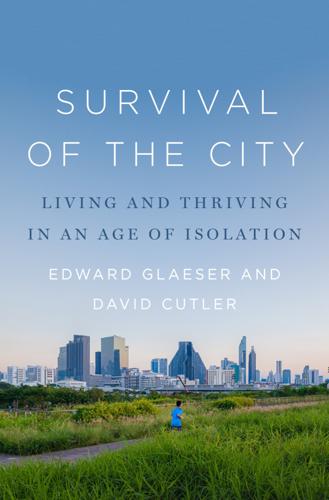
The Survival of the City: Human Flourishing in an Age of Isolation
by
Edward Glaeser
and
David Cutler
Published 14 Sep 2021
dock builder: Hershkowitz, “Some Aspects of the New York Jewish Merchant and Community, 1654–1820.” Joseph Paxton: “Sir Joseph Paxton,” Encyclopædia Britannica Online. Victor Baltard: Ardagh, “Paris: The Halles.” William Le Baron Jenney: “William Le Baron Jenney,” Encyclopædia Britannica Online. Elisha Otis: “Elisha Otis.” Encyclopædia Britannica Online. thirty more years: “William Le Baron Jenney.” Abraham Brower: “New York City Transit—History and Chronology,” World-Wide Business Centres. John Stephenson: “Death of John Stephenson; the Builder of Street Cars Passes Away Suddenly,” The New York Times.
…
“Elementary and Secondary Education Expenditures.” Urban Institute, October 23, 2017. www.urban.org/policy-centers/cross-center-initiatives/state-and-local-finance-initiative/state-and-local-backgrounders/elementary-and-secondary-education-expenditures. “Elisha Otis.” Encyclopædia Britannica Online. Accessed January 18, 2021. www.britannica.com/biography/Elisha-Otis. Elliott, Farley. “Someone Smashed the Front Window of Divisive Boyle Heights Coffee Shop Again.” Eater Los Angeles, September 4, 2018. https://la.eater.com/2018/9/4/17819262/weird-wave-coffee-window-broken-smashed-news-update. ———. “This New Boyle Heights Coffee Bar Has Become a Gentrification Battleground.”
…
The American architect William Le Baron Jenney studied in Paris and inserted a partial steel frame into Chicago’s Home Insurance Building, which is sometimes credited as being the world’s first skyscraper. Skyscrapers replace horizontal space with height. There was little demand for many-storied buildings until elevators eliminated the need to tromp up all those flights. Elisha Otis produced the first safety elevator, which he demonstrated, coincidentally, at New York’s 1853 Crystal Palace exhibition. He stood on an elevator deck and dramatically cut the only rope that was holding him aloft. The crowd watched as the Otis mechanism stopped the deck’s downward trajectory and kept its inventor safe.

Supertall: How the World's Tallest Buildings Are Reshaping Our Cities and Our Lives
by
Stefan Al
Published 11 Apr 2022
With ever-lighter elevators moving ever faster across ever-thinner cables, we will soon be able to reach higher grounds even more swiftly. Future cabins may even move along frictionless magnetic rails, ditching the cable altogether, and crisscross sideways through multiple buildings. IN 1854, DURING the World’s Fair in New York, Elisha Otis conducted a groundbreaking experiment. Wearing a suit and a top hat, he stood on a platform suspended by a single rope. He hoisted himself up above the crowds. He then invited his assistant bearing an ax to do the unthinkable. His assistant swung the ax and slashed the rope, the platform jerked, and people gasped.
…
With elevator companies vying to be the fastest, most efficient, and most state-of-the-art, they are eager to find projects to demonstrate their latest innovations. Although innovation does not always mean “progress.” For some, digital screens enliven elevator rides. For others, it’s nothing but an annoyance and an unwanted claim on attention. One hundred sixty years after Elisha Otis sold his first elevator, the Shanghai Tower became the battleground to claim elevator supremacy. IT IS RARE that an elevator ride creates excitement. Yet, as people enter one of the express elevators in the Shanghai Tower, they often pull out their cameras and start recording. All eyes are on a blue television screen displaying the elevator speed, accompanied by a screen section showing the cabin’s rapid ascent up the tower.
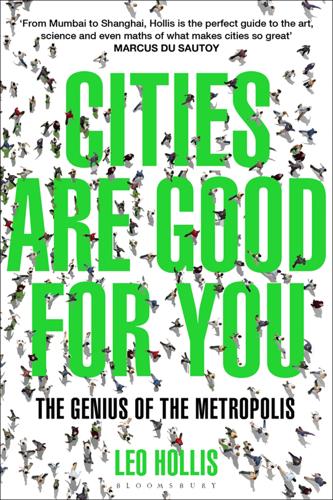
Cities Are Good for You: The Genius of the Metropolis
by
Leo Hollis
Published 31 Mar 2013
The whole exhibition showcased the many wonders of the thrusting modern city to awesome effect. Each day a crowd gathered in one of the main halls, huddling in front of a stage upon which stood a structure that appeared at first glance like a gallows. As workmen took the strain, pulling the ropes taut, a platform rose bearing aloft the inventor Elisha Otis, accompanied by several barrels and heavy boxes, until it reached 30 feet above the heads of the throng. After a dramatic pause an assistant cut the hoists with an axe and the crowds gasped as they anticipated seeing the engineer crash to the floor. But the platform only dropped a few inches and remained there, suspended in the air.
…
The ways that we come together have changed over the centuries, and this has had a huge impact on how we interact and behave with each other. Walking through New York, heading southwards along Hudson Street, it is hard to forget that Manhattan is a nineteenth-century city, created on a grid first set out in 1811. Looking up to the skyline, one can still see water towers on top of the brick buildings that were created after Elisha Otis’s technological innovation, the safety elevator, which allowed architects to scale over five storeys high for the first time. We can see similar creative and engineering innovation in Sir Joseph Bazalgette’s London, Baron Haussmann’s Paris, Boston after the fire of 1872, the San Francisco that was built from the rubble of the 1906 earthquake.

St Pancras Station
by
Simon Bradley
Published 14 Apr 2007
Though novel enough to lack a settled terminology, this perilous-seeming device was already established in London’s grand hotels: the Charing Cross and Grosvenor both had one, as did the two biggest non-railway hotels of the early 1860s, the Westminster Palace and the Langham. This was only a little behind the United States, where hydraulically operated lifts on the safety-catch principle pioneered by Elisha Otis were introduced to a New York hotel for the first time in 1859. St Pancras had two passenger lifts and two for goods, arranged in pairs and likewise hydraulically operated, of which the western passenger lift and its goods companion were replaced by electric Otis-type safety fittings in 1891. This in turn was two years after the first American electric lift began operation, and seventeen years before self-closing doors were invented, inevitably also in America.

Arbitrary Lines: How Zoning Broke the American City and How to Fix It
by
M. Nolan Gray
Published 20 Jun 2022
In the late nineteenth century, major technological innovations removed traditional barriers to urban growth: innovations in building technology removed barriers to vertical expansion in the second half of the nineteenth century. With the first steel-frame building going up in Chicago in 1885, the physical constraints associated with load-bearing walls were removed, allowing structures to efficiently rise ten stories and above for the first time. Rapid improvements in elevator technology, such as Elisha Otis’s safety locking mechanism, took the burden out of having an upper-floor office or warehouse. Collectively, these innovations allowed developers to build exponentially more floor area on the same plot of land, allowing densities to follow demand.3 All of this building supported ongoing urban industrialization between 1890 and 1920, leaving cities with a near insatiable appetite for labor.
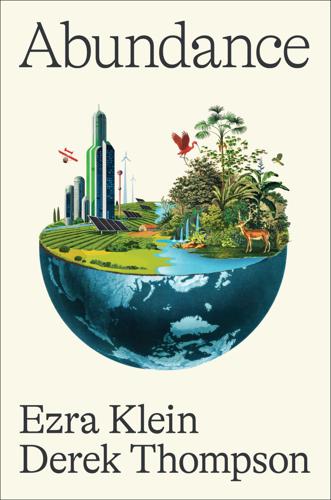
Abundance
by
Ezra Klein
and
Derek Thompson
Published 18 Mar 2025
There are many answers, but one is that we have become too enthralled by the eureka myth and, more to the point, too inattentive to all the things that must follow a eureka moment. The US has more Nobel Prizes for science than the UK, Germany, France, Japan, Canada, and Austria combined. But if there were a Nobel Prize for the domestic deployment of technology—even technology that we invented—our legacy wouldn’t be so sterling.8 An American craftsman, Elisha Otis, invented the first safe passenger elevator in 1853.9 This only deepens the irony that, 170 years later, the US struggles to build tall apartments efficiently, in part because American elevators have become “over-engineered, bespoke, handcrafted and expensive pieces of equipment that are unaffordable in all the places where they are most needed,” according to Stephen Jacob Smith, executive director of the Center for Building in North America.10 Burned by regulations and inattention to cost-effective production, basic elevators cost four times more in New York City than in Switzerland.

Strength in What Remains
by
Tracy Kidder
Published 29 Feb 2000
It was Charlie who came for me. I remarked on the apparent age of the elevator, and Charlie began—in a deep and measured voice, which wasn’t a drawl but carried traces of the South, like phrases of an old song: “The original passenger elevator was installed across the street. In the Haughwout Building. Built by old man Elisha Otis, in 1857. Without which, of course, the high-rise would not be possible. That and structural steel. Cast iron was the last-generation technology….” The elevator opened right into the living area, itself open to the kitchen. The furniture was plain. Everything in the tidy kitchen seemed to have been there for years.
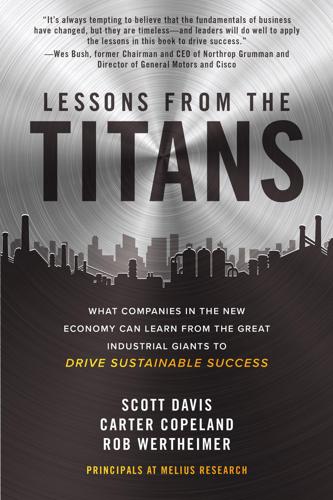
Lessons from the Titans: What Companies in the New Economy Can Learn from the Great Industrial Giants to Drive Sustainable Success
by
Scott Davis
,
Carter Copeland
and
Rob Wertheimer
Published 13 Jul 2020
However, in the 1970s, a new CEO named Harry Gray sought to diversify the company’s interests away from aerospace, changing the name to United Technologies. In the years that followed, he acquired several iconic companies including Carrier Air Conditioning, founded by Willis Carrier, the inventor of modern air conditioning, and Otis Elevator, started by Elisha Otis, designer of the world’s first elevator. These businesses operated in industries outside of United Technologies’ legacy businesses, which included Pratt & Whitney Aircraft Engines and Sikorsky Helicopter, founded by Igor Sikorsky, the inventor of the first mass-produced helicopter. Taken together, this was a collection of some of the strongest brands in the world.

The Bitcoin Standard: The Decentralized Alternative to Central Banking
by
Saifedean Ammous
Published 23 Mar 2018
Automobile, airplane, city subway, electric elevator: We have la belle époque to thank for our cities' streets not being littered with horse manure, and for our ability to travel around the world. The automobile was invented by Karl Benz in 1885, the airplane by the Wright brothers in 1906, the subway by Charles Pearson in 1843, and the electric elevator by Elisha Otis in 1852. Heart surgery; organ transplant; appendectomy; baby incubator; radiation therapy; anesthetics, aspirin, blood types and blood transfusions, vitamins, electrocardiograph, stethoscope: Surgery and modern medicine owe their most significant advances to la belle époque as well. The introduction of modern sanitation and reliable hydrocarbon energy allowed doctors to transform the way they cared for their patients after centuries of largely counterproductive measures.
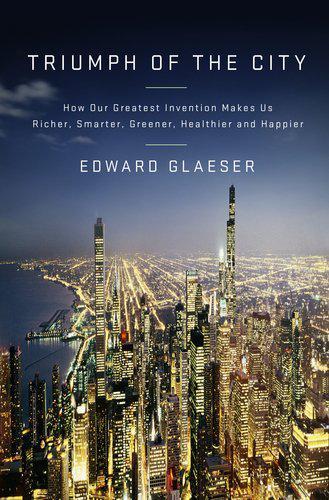
Triumph of the City: How Our Greatest Invention Makes Us Richer, Smarter, Greener, Healthier, and Happier
by
Edward L. Glaeser
Published 1 Jan 2011
Church spires and belfry towers could pierce the heavens, but only because those towers were narrow and because few people, other than the occasional bell ringer, had to climb them. Tall buildings became possible in the nineteenth century when American innovators solved the twin problems of crafting tall buildings without enormously thick lower walls and of safely moving up and down in them. Elisha Otis didn’t invent the elevator; Archimedes allegedly built one, possibly in Sicily, twenty-two hundred years ago. And Louis XV had his own personal lift in Versailles so that he could visit his mistress. Yet for the elevator to become mass transit, it needed a good source of power, and it needed to be safe.
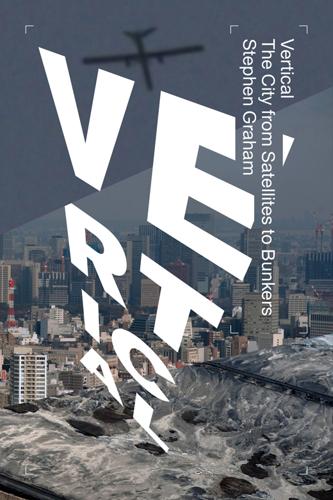
Vertical: The City From Satellites to Bunkers
by
Stephen Graham
Published 8 Nov 2016
In the 3D maps used in time geography, a vertical line actually means a person is standing still or at rest.10 Elevator Histories The elevator has a history of at least 2,000 years: Rome’s Colosseum had a system of twelve winch-powered elevators operated by slaves to lift wild animals and gladiators straight into the bloody action of the arena. Without a means of drawing power greater than that available from human or animal muscle, however, such systems were inevitably highly limited in their speed and reach. It was Elisha Otis’s invention of a safe, automatically braking elevator in Yonkers, New York, in the 1850s that created a technology enabling the vertical movement of people as well as goods that has been central to the rapid colonisation of vertical space through urban growth. Otis’s innovation opened up the vertical frontier to architectural construction like no innovation in human history.

A Crack in the Edge of the World
by
Simon Winchester
Published 9 Oct 2006
The rambunctious and boisterously enthusiastic radio-engineer Lee De Forest created the triode, known as the Audion, around the same time and with it sent the first voice broadcasts across the oceans; later he transmitted music from the top of the Eiffel Tower during his honeymoon (second of the four he would enjoy in his lifetime), with the signal being picked up 500 miles away. And, finally, though Elisha Otis had invented the principle of the elevator as early as 1852, with the first such device having been installed in a New York department store in 1857, and though the Bessemer Process allowed steel girders to be used (in place of iron columns), thus permitting taller and taller buildings to be made, it was not until these early-twentieth-century years that a combination of engineering, ambition and architectural enthusiasm coalesced sufficiently to allow for the building in New York of the world’s first true skyscrapers.

Chief Engineer
by
Erica Wagner
“The elegant and varied assortment of new goods with which we shall open has probably NEVER BEEN EQUALED IN THIS COUNTRY” the owner announced on March 17 of that year in the New York Times. But the piece didn’t mention the store’s true distinction: the first real passenger elevator ran between its floors, installed by Mr. Elisha Otis. While Otis is widely credited with the “invention” of the elevator itself, his patent was for the safety device that would eventually make high-rise buildings a real possibility; this new device had its first outing at Haughwout’s. In the beginning elevator ropes—just as in the days of the portage railway—were made of hemp; but before long the work of Mr.

The Rough Guide to New York City
by
Martin Dunford
Published 2 Jan 2009
.; the 1854 structure’s cast-iron facade was added in 1901, and today it serves as a Banana Republic store. A block and a half south, on the northeast corner of Broome and Broadway, stands the magnificent 1857 Haughwout Building, the oldest cast-iron structure in the city, as well as the first building of any kind to boast a passenger elevator – the lift, designed by Elisha Otis, was steam-powered. The facade of 75 Soho’s cast-iron architecture TRIBE CA AND S OHO | Soho In vogue from around 1860 to the turn of the twentieth century, the cast-iron architecture that is visible all over Soho initiated the age of prefabricated buildings. With mix-and-match components molded from iron, which was cheaper than brick or stone, a building of four stories could go up in as many months.

The Rough Guide to New York City
by
Rough Guides
Published 21 May 2018
Today, the first floor is a Mango fashion store while the rest is a posh residential co-op. Haughwout Building 488–492 Broadway, at Broome St • Subway N, R, W to Prince St; #6 to Spring St The magnificent 1857 Haughwout Building is the oldest cast-iron structure in the city, as well as the first building of any kind to boast a passenger elevator – the lift, designed by Elisha Otis, was steam-powered. Despite its dreary grey colour, the facade of the former housewares emporium is still mesmerizing; 92 colonnaded arches are framed behind taller columns and the whole building looks more like an elaborate sculpture. Broome Street Building 451 Broome St, at Broadway • Subway N, R, W to Prince St; #6 to Spring St Diagonally opposite the Haughwout Building and equally impossible to ignore, the ostentatious wedding-cake exterior of the Broome Street Building was completed in 1896.